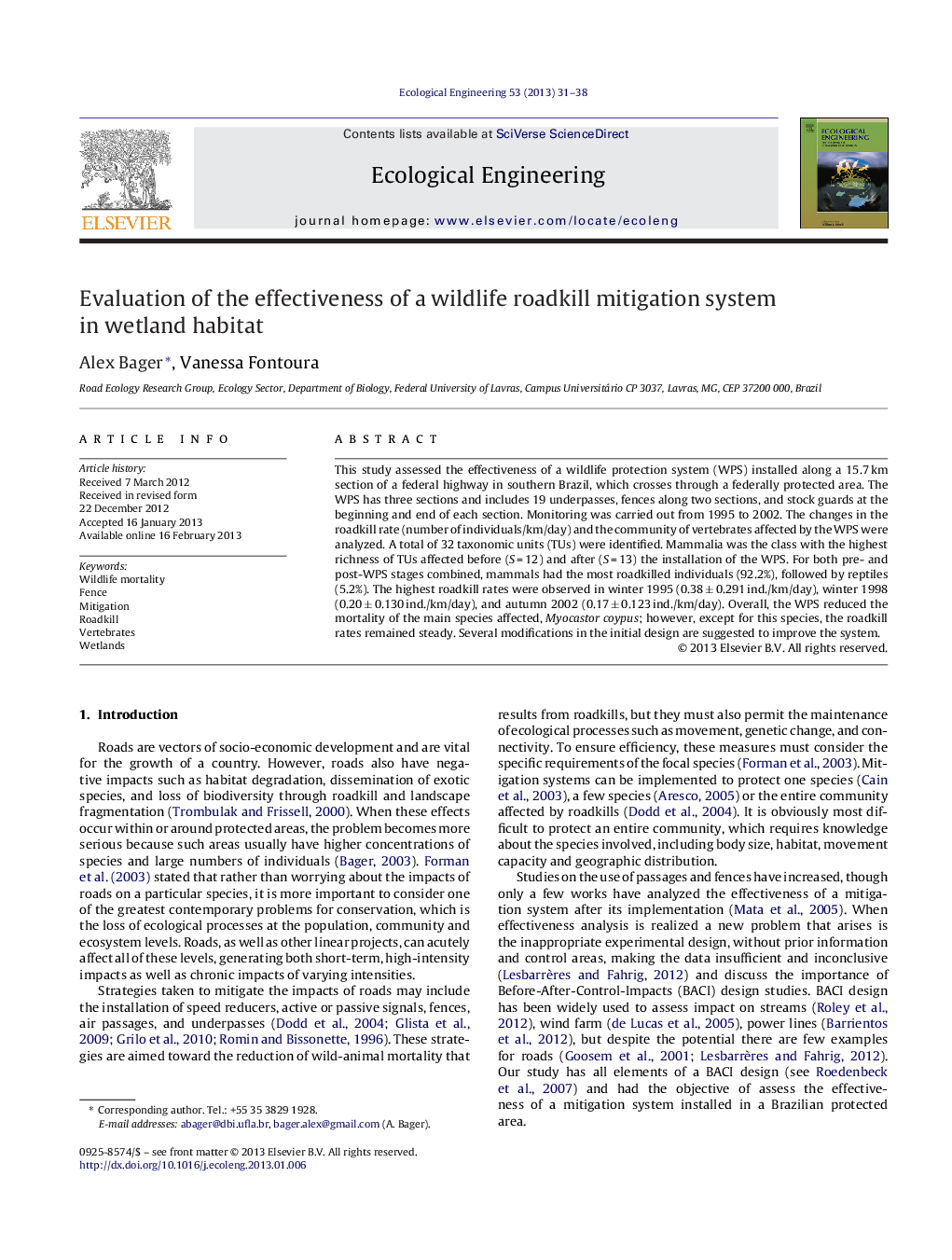| Article ID | Journal | Published Year | Pages | File Type |
|---|---|---|---|---|
| 4389663 | Ecological Engineering | 2013 | 8 Pages |
This study assessed the effectiveness of a wildlife protection system (WPS) installed along a 15.7 km section of a federal highway in southern Brazil, which crosses through a federally protected area. The WPS has three sections and includes 19 underpasses, fences along two sections, and stock guards at the beginning and end of each section. Monitoring was carried out from 1995 to 2002. The changes in the roadkill rate (number of individuals/km/day) and the community of vertebrates affected by the WPS were analyzed. A total of 32 taxonomic units (TUs) were identified. Mammalia was the class with the highest richness of TUs affected before (S = 12) and after (S = 13) the installation of the WPS. For both pre- and post-WPS stages combined, mammals had the most roadkilled individuals (92.2%), followed by reptiles (5.2%). The highest roadkill rates were observed in winter 1995 (0.38 ± 0.291 ind./km/day), winter 1998 (0.20 ± 0.130 ind./km/day), and autumn 2002 (0.17 ± 0.123 ind./km/day). Overall, the WPS reduced the mortality of the main species affected, Myocastor coypus; however, except for this species, the roadkill rates remained steady. Several modifications in the initial design are suggested to improve the system.
► We evaluated a wildlife protection system designed to reduce roadkills. ► We compared species and roadkill rates before and after the installation of the system. ► Mortality was reduced after system installation. ► Only one species truly benefited from the system protection. ► Continued fence and culvert distribution were incorrect decisions.
